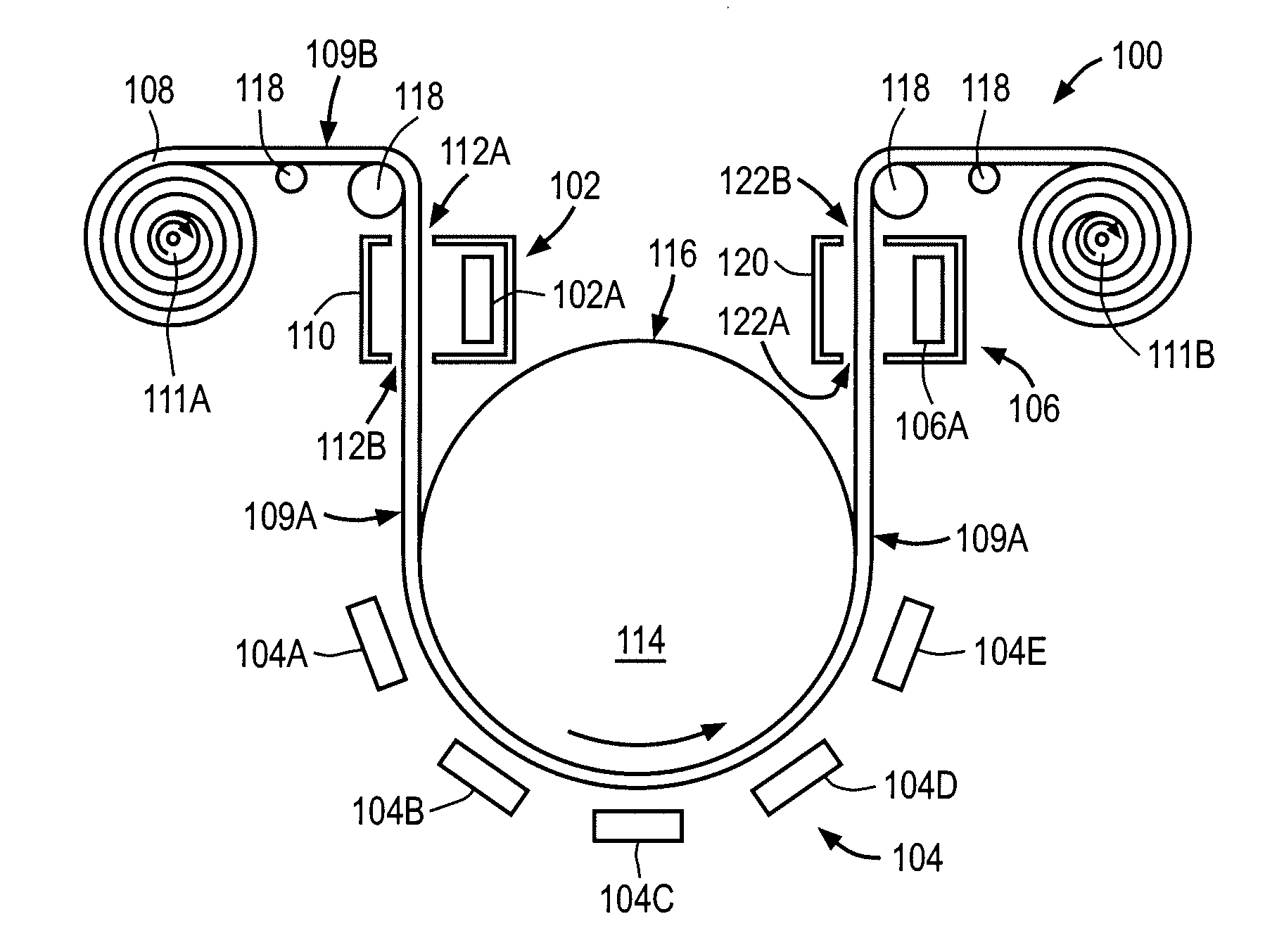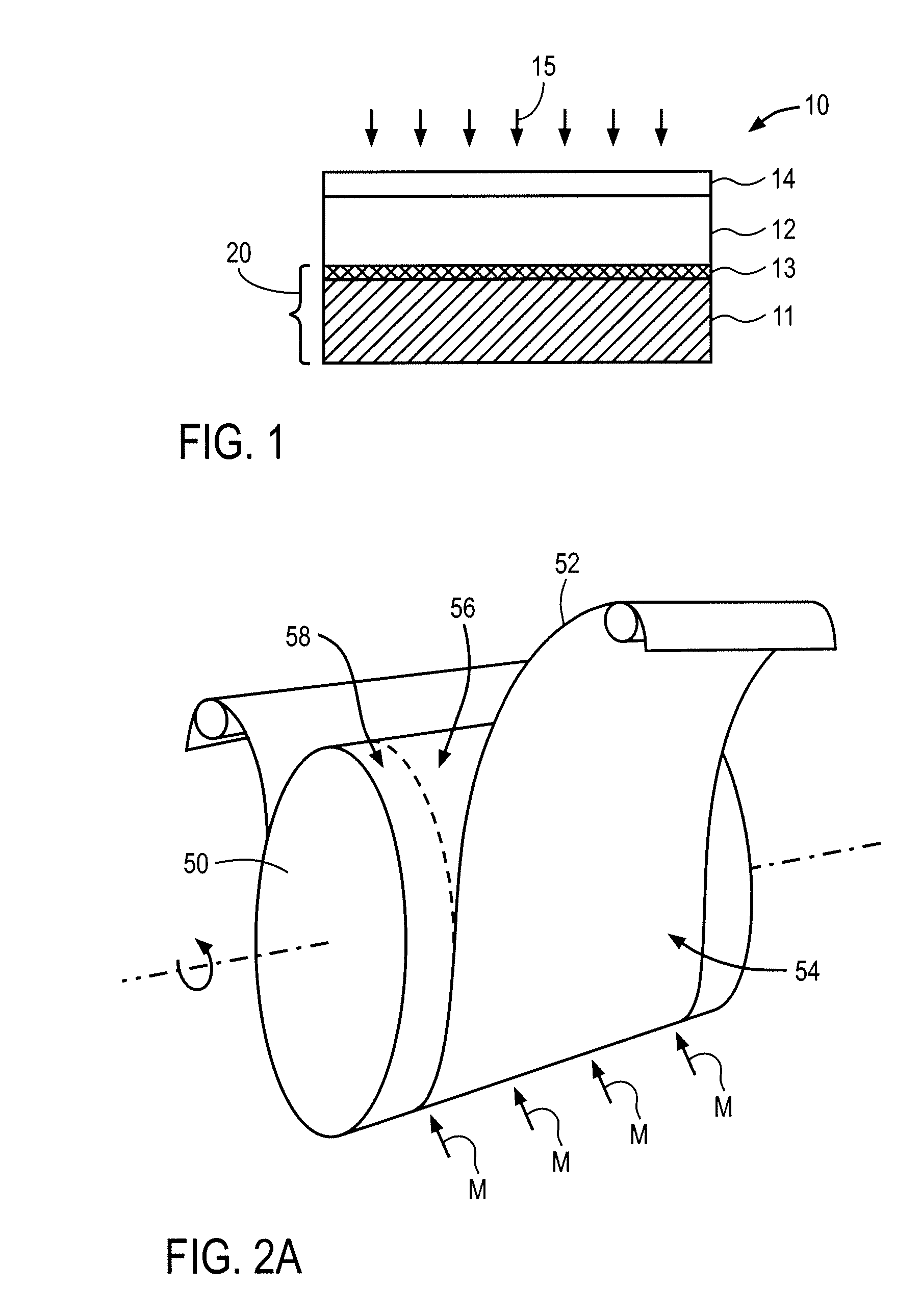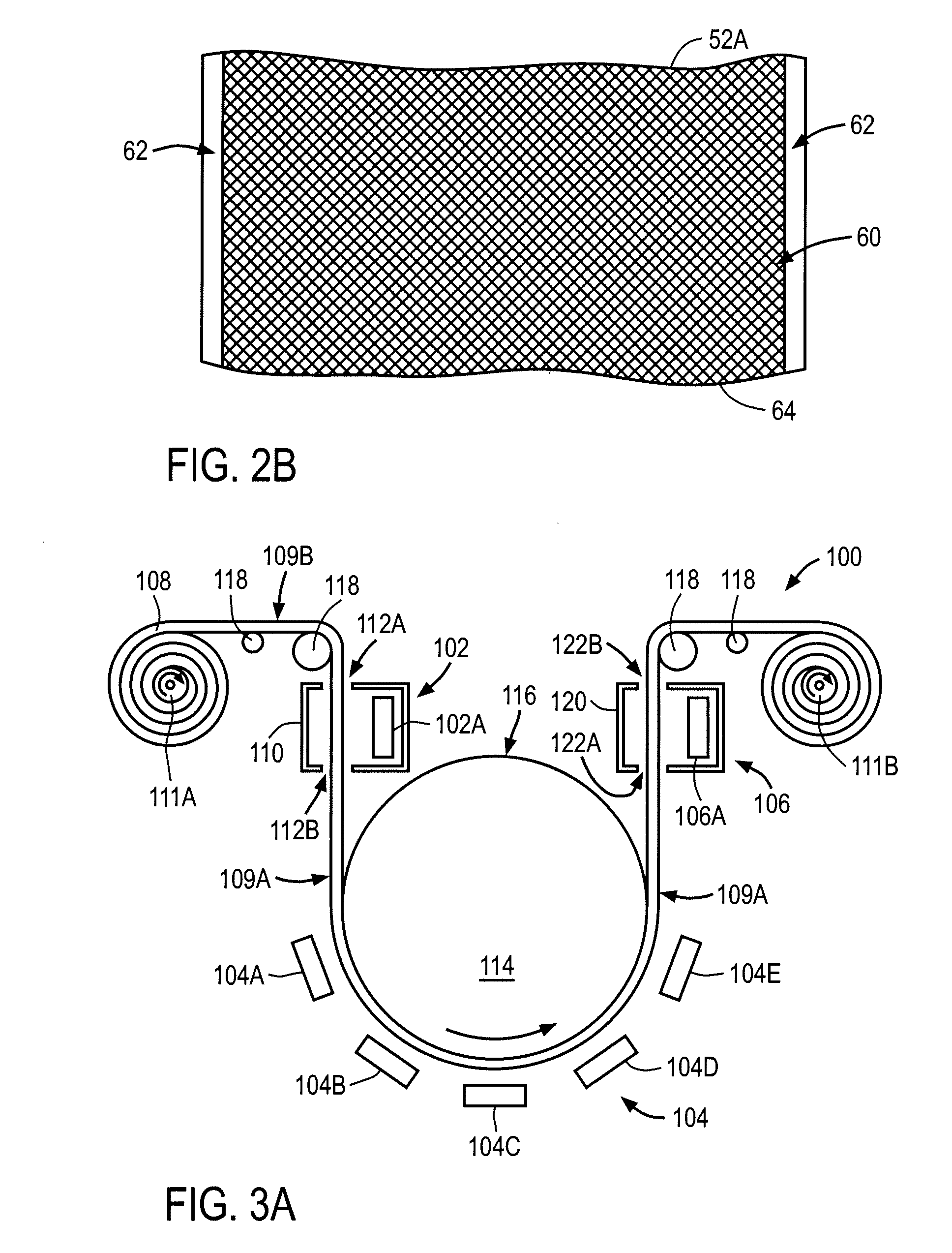Method and apparatus for forming contact layers for continuous workpieces
a technology of contact layer and workpiece, which is applied in the direction of vacuum evaporation coating, sustainable manufacturing/processing, and final product manufacturing, etc., can solve the problems of affecting the overall quality of the deposited film, introducing unwanted contamination and particle formation in the reaction chamber, and affecting the efficiency of the device. , to achieve the effect of reducing the effective series resistance of the devi
- Summary
- Abstract
- Description
- Claims
- Application Information
AI Technical Summary
Benefits of technology
Problems solved by technology
Method used
Image
Examples
Embodiment Construction
[0030]The embodiments described herein provide a roll-to-roll sputter deposition system for depositing thin films on flexible continuous substrates for manufacturing CIGS type solar cells on such substrates. The system may be used to form bases or protected base structures including a flexible substrate and one or more conductive layers formed on the substrate. The conductive layers may be formed over at least one of a back surface and a front surface of the flexible substrate.
[0031]In one embodiment, initially a back conductive layer is formed over a back surface of a continuous substrate by depositing a first conductive material in a first deposition station while the flexible substrate is advanced towards a second deposition station including a support base or drum of the system. The back conductive layer entirely covers the back surface without excluding any back surface portion. Next, a front partial conductive layer is formed by depositing a second conductive material over a f...
PUM
| Property | Measurement | Unit |
|---|---|---|
| temperature | aaaaa | aaaaa |
| temperatures | aaaaa | aaaaa |
| thickness | aaaaa | aaaaa |
Abstract
Description
Claims
Application Information
 Login to View More
Login to View More - R&D
- Intellectual Property
- Life Sciences
- Materials
- Tech Scout
- Unparalleled Data Quality
- Higher Quality Content
- 60% Fewer Hallucinations
Browse by: Latest US Patents, China's latest patents, Technical Efficacy Thesaurus, Application Domain, Technology Topic, Popular Technical Reports.
© 2025 PatSnap. All rights reserved.Legal|Privacy policy|Modern Slavery Act Transparency Statement|Sitemap|About US| Contact US: help@patsnap.com



